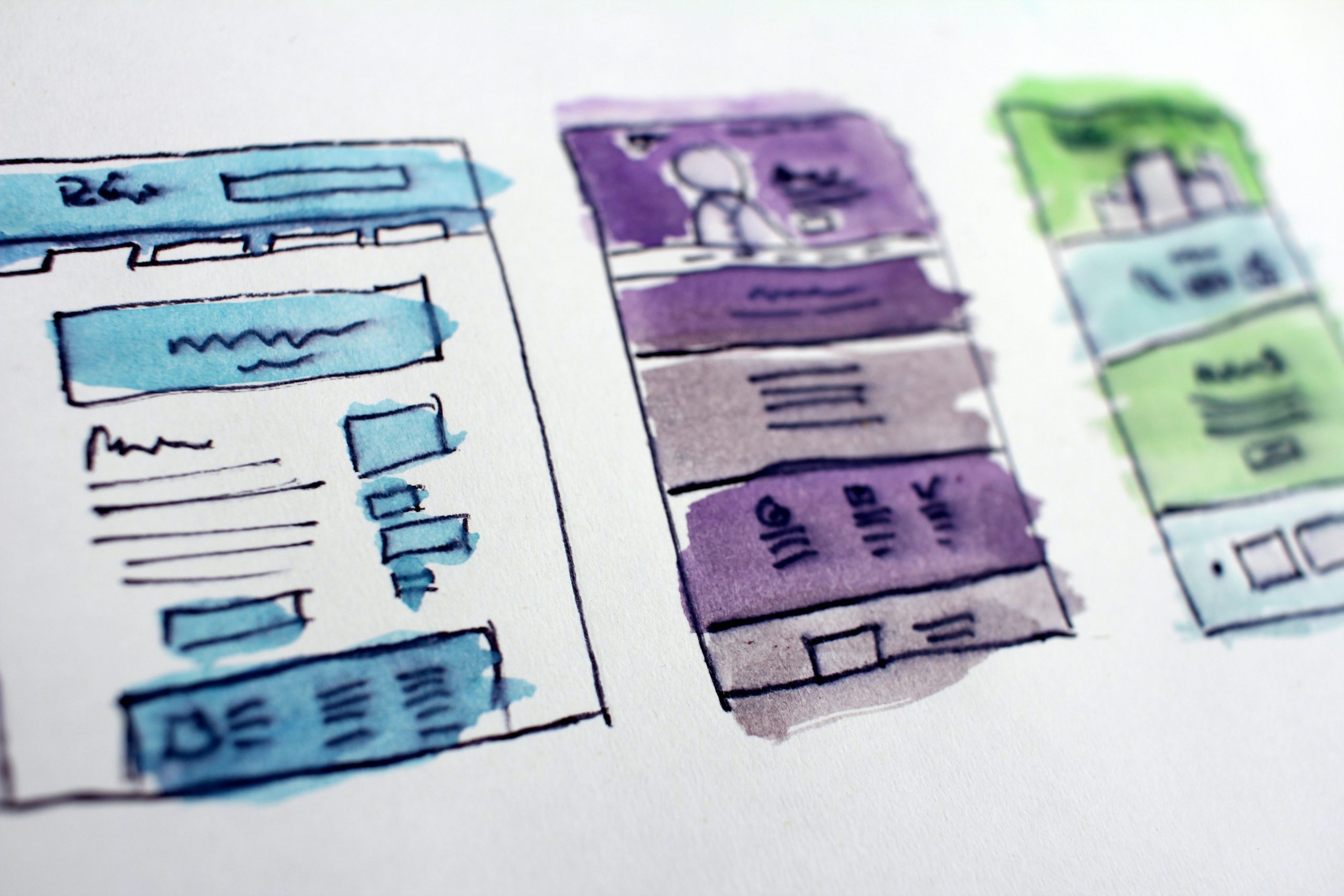Great design is more popular and necessary than ever as organizations work to modernize antiquated systems and improve customer experiences. In fact, design maturity is one of the leading indicators related to improving brand perception.
Companies with more advanced design practices are more profitable than their competitors.
This observation was validated in 2018 in a McKinsey report, “The Business Value of Design,” which outlines the positive impact of design on corporate bottom lines. According to the report, over five years, companies that invested in good design had 32 percent more revenue and 56 percent more total returns to shareholders. [1]
In further support of this point, in 2019, InVision released a report, “The New Design Frontier: The widest-ranging report to date examining design’s impact on business.” The study found that 92 percent of companies with the most mature design functions — roughly five percent of the 2,200 companies surveyed across 24 industries — could draw a straight line between their design teams’ work and their company’s revenue. Ninety-nine percent said customer satisfaction increased, and 85 percent increased cost savings. [2]
This brings us to the question of why and how does design lead to productivity gains, reduced costs, and increased revenue? To establish this let’s first dive into how design is viewed within the organization.
How leaders view design
Many leaders see product design as a marketplace differentiator. However, organizations continue to ignore or struggle with adopting better design practices. In many cases, companies lead with technological solutions and treat design as an afterthought. This has to do with the emphasis on design and where design practices fall in the product development cycle. It’s important to note that design practices go far beyond user interfaces and screen layout. Design has a place throughout the product development cycle, from initial user research and journey mapping through prototyping and usability testing.
If one of your goals is to improve how customers and users perceive your brand, you have to go beyond marketing and attractive images. You must consider your maturity level as it relates to both user experience (UX) design and customer experience (CX). The two disciplines complement one another; however, they both encompass different capabilities.
Companies with a high degree of design maturity typically improved their overall CX practices. You don’t have to look far to validate this. Just consider Netflix, Walt Disney, Apple, and Nike. These brands excel at design. Netflix was ranked number one in Forrester’s US CX Index in 2017 for over-the-top (OTT) providers. Apple was ranked third in the PC manufacturing index and fifth in mobile devices. [3] One thing all these companies have in common is they seamlessly integrate design into their workflows.

How to think about and scale design
The most mature organizations utilize design operation techniques or DesignOps structures. DesignOps organize how design teams perform work both strategically and operationally so they can operate at scale. It is about removing operational overhead so designers can do what they do best: design products and services. It considers things like reducing time spent in meetings, standardizing tooling and methods, and HR tasks and culture.
There are three primary work areas within a DesignOps structure: 1) operations, 2) methods, and 3) technology. Each of these areas has its own sub-tasks and procedures. For example, in terms of methods, we utilize a human-centered design (HCD) approach. The premise of HCD is to take an empathetic viewpoint to solve problems and define solutions. As a result, HCD leads with user research to better understand the pain points that users are having. The intent is to start with the problem and work toward optimizing a solution. It relies heavily on the rapid prototyping of user interfaces, designs, and interactions so that the design team can perform usability testing early in the lifecycle. This helps reduce friction during development by clearly articulating and testing the user experience in advance. This leads to more refined user stories and a more cohesive design grounded in user research and validated through moderated and unmoderated user testing. Additionally, utilizing HCD moves design closer to the beginning of the product lifecycle, as opposed to the middle or, in the worse case, the end.
How does this work in practice
In one example, we worked on the design for a digital display for a self-service kiosk. The kiosk is an Internet of Things (IoT) enabled system that gives consumers the ability to order beverages in real-time. We had a team of 6 consultants on the project, mostly made up of user experience practitioners. The team followed an HCD approach and began with user interviews. They were responsible for soliciting consumers in the market and performing contextual inquiries. This allowed the team to better understand user expectations and needs by interviewing and observing consumers. This ties back to having empathy for the users by understanding their needs and identifying friction points in the process.
The team then created a prototype of the design used to run usability testing with end consumers. To do this, they solicited participants once again and conducted moderated testing. Users were given a series of tasks to complete; for example, we asked users to place certain orders and perform various functions. Tasks and feedback were recorded, including physical-screen touch locations, facial gestures, and eye movement. The intent was to improve the user experience by identifying sticking points in the process. The prototyped designs were approved and converted to pixel-perfect design assets, which were used in development. The team also had to document business rules and functional logic for each possible user interaction. This included error messaging as well. The key lesson here is that design capabilities were utilized early in the lifecycle, using proven methods well suited for the project. By interviewing users, prototyping, and testing early, the team was able to refine its designs before the product’s development.
One of the biggest challenges we faced during this project was the uncertainty with the form factor since the kiosk had its own user interface proportions and characteristics. The issue wasn’t in the interface’s size; it had to do more with the physical hardware. An example was the responsiveness of the software when someone touched the screen. As a result, the team had to work closely with engineering to ensure the interactions we were prototyping were achievable given the hard constraints. To mitigate this risk, the team brought engineering to the table during the prototyping phase to validate expectations. If something was not achievable given a hard constraint, the team placed the requirement in a future-release bucket.
What’s described above is one course of action using a series of capabilities. However, there are many more methods, such as Design Sprints, Design Thinking, and Lean UX. What’s important is that you agree to a method and apply it over a period of time to see what works for your design team and organizational culture. The other two areas within DesignOps — operations and technology — are equally important. However, when it comes to maturing design practices, the way to get started is to agree on the methods and apply them. To build organizational momentum, you want to achieve early wins and start adding value as quickly as possible. The more credibility you can gain, the better off you’ll be as you grow your design practices.
———————-
References:
[1] Benedict Sheppard, Hugo Sarrazin — 2018 McKinsey report, “The Business Value of Design”
[2] In further support of this point, in 2019, InVision released a report, “The New Design Frontier”
[3] Rick Parrish — Forrester’s US CX Index in 2017




